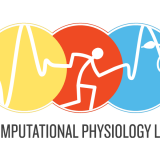$1.7M Research Project to Examine How Public Schools Identify Learning Disabilities

Jeremy Miciak is research associate professor of psychology at UH’s Texas Institute for Measurement, Evaluation and Statistics or TIMES. Much of his research covers reading interventions in elementary, middle and secondary schools.
A University of Houston researcher is launching a new study to examine how elementary schools across Texas and Florida identify specific learning disabilities in students, with the goal of improving processes so children with significant academic difficulties can succeed.
Jeremy Miciak, research associate professor of psychology at the University of Houston’s Texas Institute for Measurement, Evaluation, and Statistics, was awarded a $1.7 million grant from the National Center for Special Education Research at the Institute of Education Sciences, the research arm of the U.S. Department of Education.
More than seven million, or 15% of all public school students in the United States received special education or related services in 2021-22, according to the most recent data from the National Center for Education Statistics. Among those receiving special education, the most common category of disability was specific learning disabilities, or SLD, at about 32%.
A specific learning disability is a disorder in one or more of the basic psychological processes involved in understanding or using language that may manifest itself in the imperfect ability to listen, think, speak, read, write, spell or do mathematical calculations. SLD does not include learning problems that are due to visual, hearing, motor or intellectual disability.
“In this project we are trying to better understand the ways in which schools identify specific learning disabilities for children who are struggling with reading specifically,” Miciak said. “Under the umbrella category of SLD, most students are identified as having difficulties in reading. Identification is important because it’s the primary mechanism by which students who are struggling academically can receive additional help to be successful in school.”
Large-scale studies seem to indicate that remedial programs for children with SLD are not particularly effective, Miciak adds. He and his research team will investigate potential reasons behind this. One hypothesis is that students most at risk are not being identified. Another focuses on the effectiveness of special education program instruction, while the final possibility questions the suitability of current referral programs and eligibility criteria for special education.
To test these hypotheses, 900 third- and fourth-grade students at significant risk for SLD will be recruited from 30 public elementary schools that are geographically and demographically diverse. Children will be recruited in two cohorts and each cohort will be studied for two years in the four-year study. Students at-risk for SLD are defined as the lowest scoring of their grade and school on a well-established screening measure, the Gates MacGinitie Reading Test. Miciak and his team will investigate how these children are evaluated for special education eligibility and the special education programs that emerge from the evaluation process.
Competing Models for SLD Identification
Schools have a great amount of discretion in identifying children with learning disabilities, due in part to the 2004 Individuals with Disabilities Education Act, Miciak said. “Following this law, a couple competing models for SLD identification have emerged in schools that we’re trying to evaluate.”
One of those models is what he terms as an instructional approach that focuses on academic outcomes and the instruction students receive. “If they’re not making progress despite good instruction, then that’s unexpected under achievement,” he said.
The contrasting approach is one he calls the cognitive discrepancy method. This traditional view of a learning disability suggests that a child’s intellectual capabilities should translate into better academic performance. For instance, if a student’s actual academic achievements do not align with their IQ test results, then a learning disability could be present.
Based on his own studies, Miciak does not think schools should use cognitive tests, like IQ tests, for evaluating academic performance. Instead, he proposes that decisions should rely on actual academic achievements.
“Ultimately, this study aims to provide a more systematic understanding of the decisions schools make to identify children at risk for SLD. I hope the findings will help schools improve their identification processes so more students can find success, no matter the challenges they face,” he adds.
See the original article at: $1.7M Research Project to Examine How Public Schools Identify Learning Disabilities – University of Houston (uh.edu)














